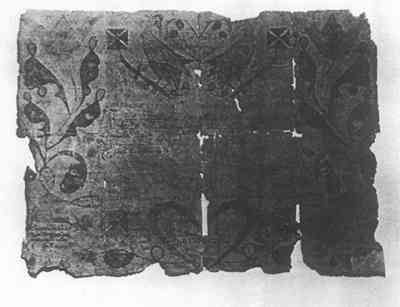THE CONSERVATION OF A SHENANDOAH VALLEY FRAKTURElizabeth C. Hollyday
4 MENDINGThe reassembling and subsequent treatment of the fraktur is a modification of the procedure used in the conservation of the Wall Charts from the Cloister at Ephrata, Pennsylvania.9 The sections were laid face up and aligned as exactly as possible to match the details of the design. To bind the sections temporarily, narrow strips of Scotch tape were stuck lengthwise along the joins. The tapes were later removed with benzine. Thin strips of strong Usagami #1, Japanese mulberry paper, were made by using a wet cut: a pointed, wet sable brush is drawn along a ruler edge placed on the mulberry paper, and 1/4 inch wide strips are pulled from the paper. Strained, thin wheat starch paste (Aytex P from General Mills) was brushed over the strips.10 With the fraktur face down on a sheet of Japanese silk tissue on plate glass, the pasted strips were laid over the joins and tears and covered with blotters and pieces of plate glass as each bit of mending was completed. Figure 5 shows the front of the patched fraktur.
|
